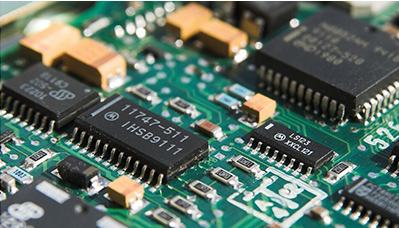Generally divided into 3 categories: triangular temperature curve, heating-heat preservation-peak temperature curve, low peak temperature curve.
(1) Triangular temperature curve suitable for simple PCBA products
Regarding the simple product, because the PCB is easier to heat, the temperature of the component and the printed board are relatively close, the temperature difference of the PCB surface is small, so the triangular temperature curve can be used.
When the tin slip is properly formulated, the triangular temperature curve will result in brighter solder joints. However, the activation time and temperature of the flux must be adapted to the higher melting temperature of the lead-free solder paste. The heating rate of the triangular curve is controlled as a whole, generally 1-1.5 degree Celsiuss. Compared with the traditional heating-heat preservation-peak curve, the energy cost is lower. This kind of curve is generally not recommended.
(2) Recommended temperature rise-heat preservation-peak temperature curve

The temperature rise-heat preservation-peak temperature curve is also called the tent-shaped curve. The figure is the recommended temperature rise-hold-hold-peak temperature curve (same as Figure 1), in which curve 1 is the temperature curve of Sn37Pb soldering, and curve 2 is the temperature curve of lead-free Sn-Ag-Cu solder paste. It can be seen from the figure that the limit temperature of the component and the traditional FR4 printed board is 245 degree Celsius, and the process window of lead-free soldering is higher than that of Sn-37Pb.
Much narrower. Therefore, lead-free soldering requires slow heating, sufficient preheating of the PCB, and lowering of the PCB surface temperature difference △ to make the PCB surface temperature uniform, and then complete a lower peak temperature (235 ~ 245 degree Celsius) to avoid damage to the equipment and FR-4 base. Material PCB. The requirements for the temperature rise-heat preservation-peak temperature curve are as follows.
1. The heating rate should be limited to 0.5~1 degree Celsius/s or below 4 degree Celsius/s, depending on the solder paste and components.
2. The formula of the flux composition in the solder paste should fit the curve. Excessive heat preservation temperature will damage the performance of the solder paste.
3. The second temperature rise slope is at the entrance of the peak zone. The typical slope is 3°C/s above the liquidus line and requires 50-60s, and the peak temperature is 235-245°C.
4. In the cooling zone, in order to avoid the growth of crystal particles in the solder joints and to avoid segregation, the solder joints are required to cool down quickly, but special attention should be paid to reducing the stress. For example, the maximum cooling rate of ceramic chip capacitors is -2 to -4°C/s.
(3) Low peak temperature curve
The low peak temperature curve means that the first step is to add slow heating and full preheating to reduce the PCB surface temperature difference in the reflow zone. The orientation of large components and large heat capacity generally lags behind the peak temperature of small components., Figure 3 is a schematic diagram of the low peak temperature (230-240 degree Celsius) curve. In the figure, the solid line is the temperature curve of the small component, and the dashed line is the temperature curve of the large component. When the small component reaches the peak temperature, stick to a low peak temperature and a wider peak moment, let the small component wait for the large component; wait for the large component to reach the peak temperature and hold for a few seconds, and then cool down. This measure can prevent damage to the meta equipment.
The low peak temperature (230~240 degree Celsius) is close to the peak temperature of Sn-37Pb, so the risk of damage to the equipment is small, and the energy consumption is low; but the PCB layout, thermal design, adjustment of the reflow soldering process curve, process control, and equipment The requirements for lateral temperature uniformity are relatively high. The low peak temperature curve is not applicable to all products. In actual production, the temperature curve must be set according to the specific conditions of PCB, components, solder paste, etc., messy boards may require 260°C.
After studying SMT welding theory, it can be seen that the welding process involves physical reactions such as moisture, viscosity, capillary phenomenon, heat conduction, diffusion, and dissolution, and chemical reactions such as flux decomposition, oxidation, and recovery. It also touches metallurgy, alloy layer, and gold. Phase, aging, etc., are very messy processes. In the SMT patch process, it is necessary to use soldering theory to correctly set the reflow soldering temperature curve. In PCBA production, the correct process method must be mastered, and the process control must be carried out to make the SMT complete. The pass rate of the SMA after printing solder paste, mounting element equipment, and finally from the reflow soldering furnace is completed. Zero (no) defects or The quality of reflow soldering close to zero defects also requires all solder joints to reach a certain mechanical strength. Only such products can achieve high quality and high reliability.